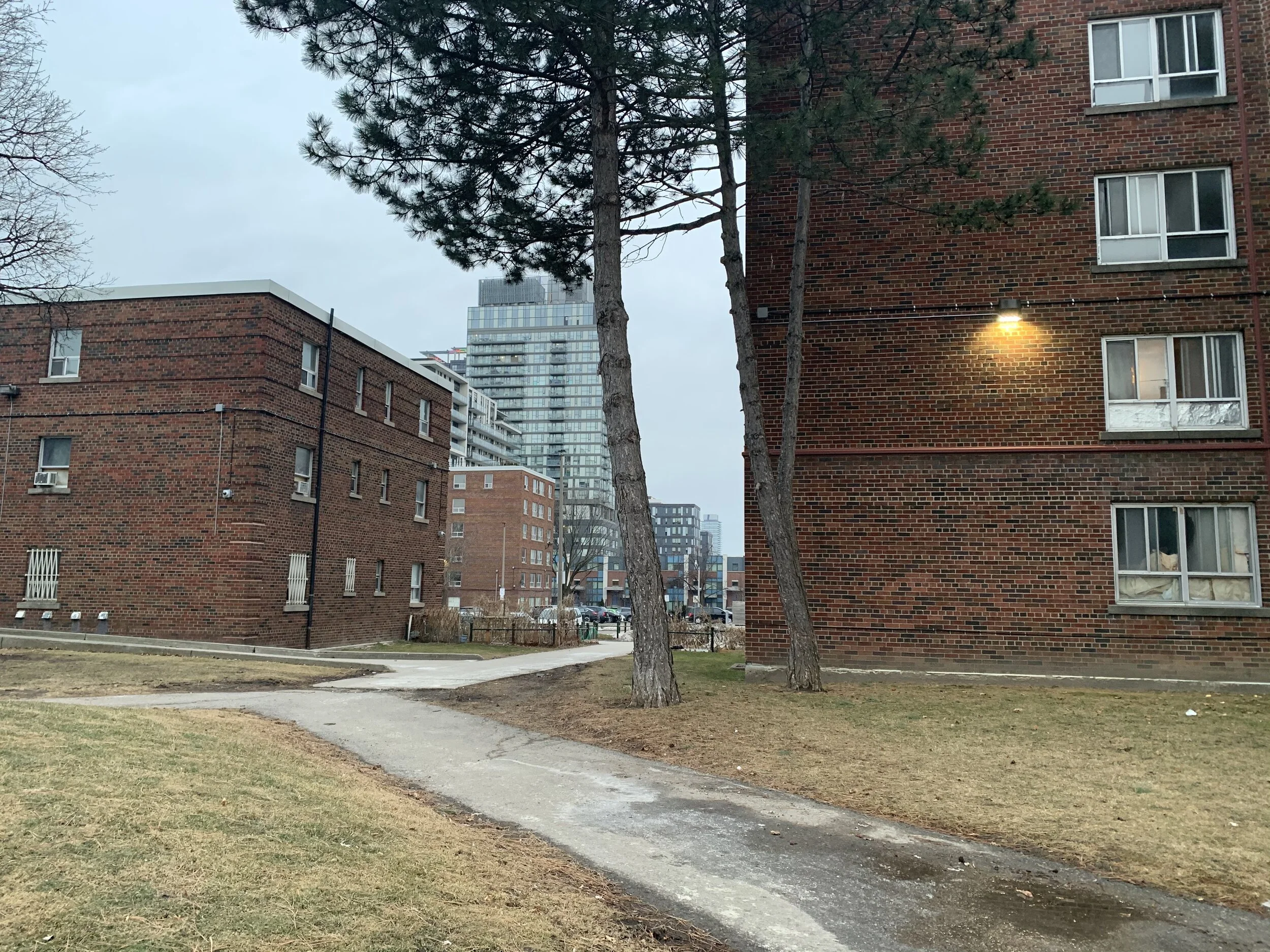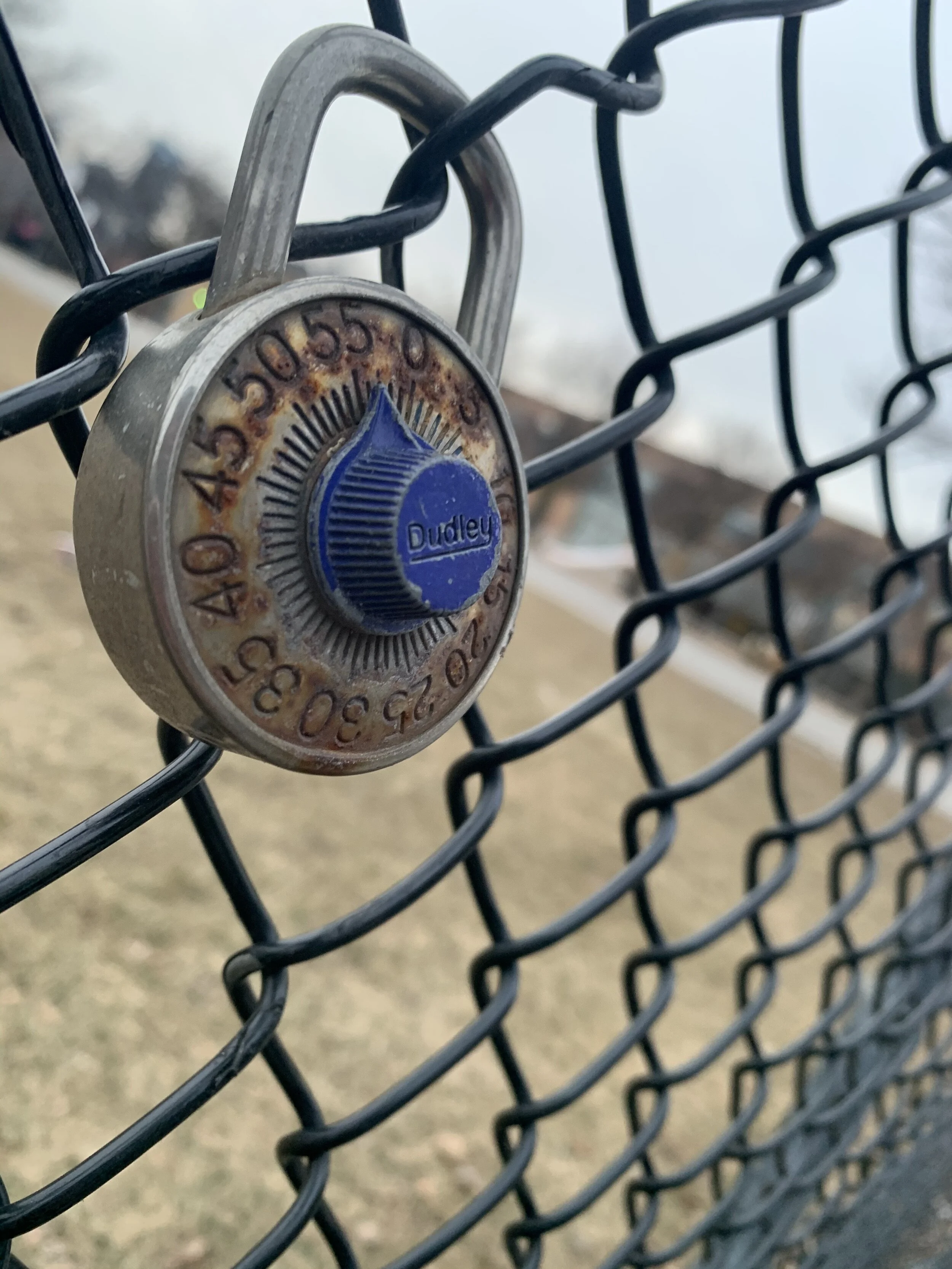Prior to participating in the collaborative media production process with Regent Park’s Diva Girls these past few months, I had never considered the role that faith and religious institutions play in shaping our cities. Indeed, the role of faith-based organizations in urban settings often goes unnoticed, particularly as western governments and planning organizations consider themselves to be secular and predicate their work on a notion of religious indifference (Manouchehrifar, 2018). Through my experiences collaborating with the Diva Girls and producing a media project, I was able to gain a much deeper understanding of the variety of roles that religious institutions play in a neighbourhood and how central they are to both social service provision and community building. This is particularly true for neighbourhoods like Regent Park, in which religious institutions have partially filled the gap left by the state’s inadequate support for the neighbourhood’s diverse residents.
My media project seeks to address this underrepresentation of religious institutions in the consideration of various urban issues, from community-building to social service provision. This is particularly important in a neighbourhood like Regent Park, which has changed dramatically through its revitalization. While many community organizations and non-profits were able to secure space in the revitalized neighbourhoods, faith-based organizations were often not afforded the same privilege. Notably, two of Regent Park’s mosques, which have operated in the basement of Regent Park apartment buildings at no cost, were not able to secure equivalent space in the redevelopment and have likely already closed down as their buildings are prepared for demolition (Vaughn, 2009; Jamil, 2015). This example alone shows that the role played by religious institutions in supporting and creating community in Regent Park has gone unnoticed by municipal officials and planners, at a detriment to Regent Park’s community.
Many of Regent Park’s mosques operated in the basements of the neighbourhood’s original apartment buildings at no cost. They already have or will likely need to shut down once these final remnants of the first Regent Park are demolished. (Photo by Fazra)
The role of religious institutions is doubly important in Regent Park because of the strong role they play in helping settle new immigrants. From the 1970s onward, Regent Park has been a reception area for new immigrants arriving to Toronto (Purdy, 2003). This has continued in recent decades, with 16.2% of Regent Park’s residents classified as recent immigrants in 2001 (City of Toronto, 2003). Religious institutions, including churches, mosques, and temples, often play the single strongest role in helping new immigrants settle into their new neighbourhood (Ley, 2008). These religious institutions, on the practical side, provide recent immigrants with a variety of services and programs that help them adapt to life in Canada. This includes helping individuals find employment, helping parents navigate a new education system on their child’s behalf, offering language classes for both children and adults, and providing material needs like clothing and food to low-income families. Even more importantly, however, religious institutions provide new immigrants with an immediate source of community, connecting them to people who share their beliefs and, in many cases, their ethnicity and language. Religious institutions are able to provide new immigrants with social capital and help them forge connections in an unfamiliar and daunting new environment, creating strong communities of mutual understanding and support (Ley, 2008).
It is also important to acknowledge that religious institutions provide these social and cultural supports, in addition to a wide variety of other social services, in response to the retrenchment of the welfare state (Beaumont, 2008). All levels of government in Canada have downsized the provision of social services over the past three decades in particular, adopting an increasingly neoliberal and privatized approach to welfare provision. In response, faith-based organizations have stepped in to fill the gaps left by the state, providing not only their congregation but also the wider community with an array of services, including food banks, hot meals, clothing, educational classes, and children’s programs (Beaumont, 2008). These services are particularly important in neighbourhoods like Regent Park, which, as a social housing development, has a high concentration of individuals and families living below the poverty line and which has historically been underserved by the state (Jamil, 2015).
Considering these integral functions played by religious institutions, particularly in marginalized neighbourhoods, the goal of my media project is to illuminate the history of religious institutions in Regent Park and to get viewers to think about the critical role that religious institutions play in forming and supporting community in urban neighbourhoods. My media project is a story map, which shows the various religious institutions that have been established in Regent Park both prior to and throughout the neighbourhood’s development. The story map shows how religious institutions have developed in the neighbourhood largely in response to changes in immigration patterns, reinforcing the central role they play in community-building and settlement for newcomers. It also highlights the wide variety of social services offered by Regent Park’s churches, mosques, and temples, including food banks, counselling services, and mentorship programs for youth. By showing how the religious fabric of Regent Park has changed over time, I hope to help highlight the integral role these institutions have played in the community for decades.
A construction site in Regent Park, where an original residential complex one stood. (Photo by Daria)
Initially, I did not anticipate making a story map for this media project. My group, Positive Space, which included Fazra and Amina, two Regent Park Diva Girls, wanted to interview Muslim residents of Regent Park about their feelings of belonging and identity in the community. We then hoped to produce a series of short videos that paired the audio from our interview with photographs of the participants around the neighbourhood. Unfortunately, our project became impossible due to the University closure and social distancing required during COVID-19. At this point, I switched gears and felt that a story map was an interesting and interactive way to showcase the history and importance of Regent Park’s religious fabric. The story map platform offers a number of features that I felt could make this project impactful. It has a strong spatial element, allowing me to show where in the neighbourhood religious institutions established themselves across time using a series of maps. It also allows me to incorporate visuals throughout the project, using pictures of the religious institutions to show how their physical spaces and facilities have transformed over time. This is particularly helpful in showing how recently established places of worship, particularly Regent Park’s mosques, have established themselves in basements and commercial spaces in contrast to older churches that were able to build their own designated structures. Finally, the story map is a highly interactive platform, allowing the viewer to actively participate in the project by clicking on map icons and pictures. Given the limitations in place during the current pandemic, I thought this was an engaging way to illuminate Regent Park’s religious fabric digitally.
The process of compiling this story map showed me how little information is available about religious institutions in our city. Collecting the information for this project was extremely challenging, as only the religious institutions themselves tended to document any of their history, if at all. This led me to obscure websites, Facebook pages, Google reviews, and even the use of Google Earth Street View and Google Earth Pro to use historical satellite images to see when places of worship were built or demolished in the neighbourhood. In other circumstances, it would have been invaluable to interview both leaders of these religious institutions and members of their congregation to learn more about their history and the role they play in Regent Park. Overall, producing this project showed me how much opportunity there is to research and document the role of religious institutions in Toronto.
A photo highlighting the contrast between Regent Park’s new and old apartment buildings. (Photo by Fazra)
More importantly, producing this project, and working with the Diva Girls earlier this year, showed me how central religious institutions are to their neighbourhoods and communities. From supporting tenant activism in the 1960s (Purdy, 2004) to running food banks for low-income individuals and families, religious institutions have been at the heart of Regent Park since the first iteration of the social housing project was built in the 1940s. Both at present and historically, the vast majority of Regent Park’s religious institutions were formed by the neighbourhood’s predominant immigrant groups, from its Macedonian-Bulgarian Orthodox churches built in the 1940s to its mosques built in the 1990s and early 2000s. While the physical spaces these institutions occupy has varied greatly depending on when they were built, they all served a vital function in helping develop community for the neighbourhood’s newcomers and supplementing lackluster social services for the neighbourhood’s most vulnerable residents. While their roles may not be formally recognized by municipal officials or planners, Regent Park’s religious institutions will remain central in maintaining and, in some cases, rebuilding Regent Park’s diverse and vibrant communities as they have been displaced and disconnected through the revitalization.
See the full story map here.
The Positive Space team members are Amina, Fazra, and Daria.
Works Cited
Beaumont, J. (2008). Faith Action on Urban Social Issues. Urban Studies, 45(10), 2019-2034. doi: 10.1177/0042098008094871
City of Toronto. (2003). Regent Park: Social Profile #2 - Neighbourhoods Immigration, Ethnicity, Language. City of Toronto Community & Neighbourhood Services. Retrieved from https://www.toronto.ca/ext/sdfa/Neighbourhood%20Profiles/pdf/2001/pdf2/cpa72.pdf
Jamil, U. (2015). Making place: Muslims in the neighbourhood. Contemporary Islam, 9, 321-335. doi: 10.1007/s11562-015-0346-y
Ley, D. (2008). The Immigrant Church as an Urban Service Hub. Urban Studies, 45(10), 2057-2074. doi: 10.1177/0042098008094873
Manouchehrifar, B. (2018). Is Planning ‘Secular’? Rethinking Religion, Secularism, and Planning. Theory & Practice, 19(5), 653-677. doi: 10.1080/14649357.2018.1540722
Purdy, S. (2004). By The People, For The People: Tenant Organizing in Toronto’s Regent Park Housing Project in the 1960s and 1970s. Journal Of Urban History, 30(4), 519-548. doi: 10.1177/0096144204263804
Purdy, S. (2003). "Ripped off" by the System: Housing Policy, Poverty, and Territorial Stigmatization in Regent Park Housing Project, 1951-1991. Labour, 52, 45-108. doi: 10.2307/25149384
Vaughn, J. (2009, March 21). Little mosque in the basement. The Globe and Mail. https://www.theglobeandmail.com/news/national/little-mosque-in-the-basement/article20445735/








